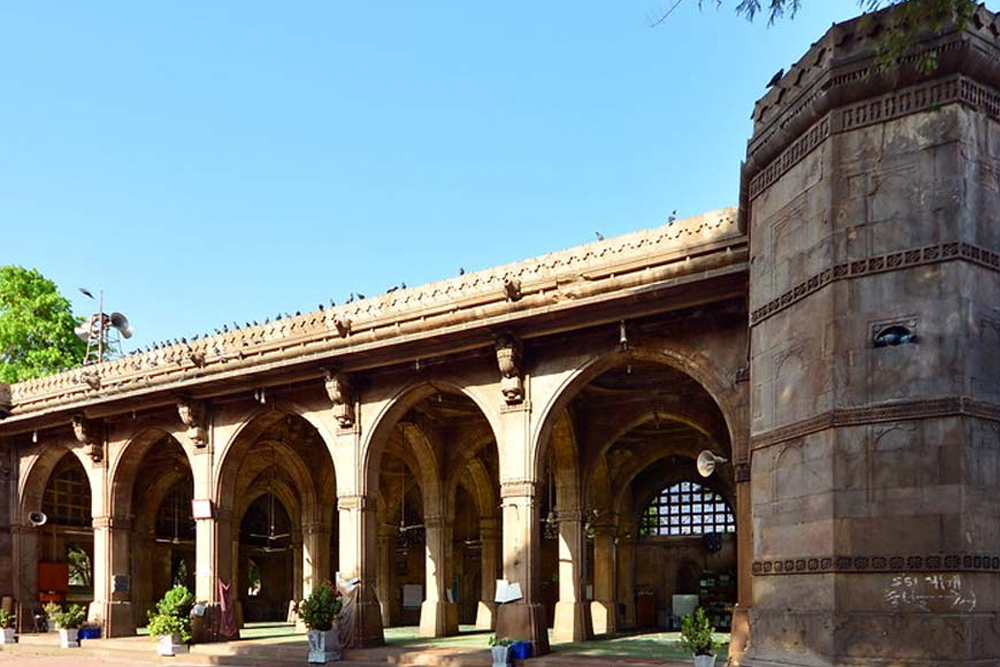Discovering Sidi Saiyyed Mosque: Iconic Landmark of Ahmedabad, Gujarat
- Home
- Discovering Sidi Saiyyed Mosque: Iconic Landmark of Ahmedabad, Gujarat
Discovering Sidi Saiyyed Mosque: Iconic Landmark of Ahmedabad, Gujarat

Sidi Saiyyed Mosque, affectionately known as Sidi Saiyyid ni Jali locally, stands as a masterpiece of architectural brilliance and historical significance in the vibrant city of Ahmedabad, Gujarat, India. Built in the year 1572–73 AD, this iconic mosque has earned its place among the most famous landmarks of Ahmedabad, captivating visitors with its intricate craftsmanship and spiritual ambiance.
Commissioned by Sidi Sayyad, a Habshi nobleman, the mosque is a testament to the cultural diversity and architectural ingenuity of Gujarat's rich heritage. Its construction represents a harmonious blend of Islamic and Indian architectural styles, featuring delicate stone latticework, intricate carvings, and elegant domes that reflect the artistic finesse of its creators.
The highlight of Sidi Saiyyed Mosque is undoubtedly its mesmerizing jali (lattice) work, which adorns the central windows of the mosque's prayer hall. These intricately carved stone screens depict the mesmerizing "Tree of Life" motif, intricately intertwined with geometric patterns and floral designs, showcasing the skill and creativity of the artisans of that era.
Beyond its architectural splendor, Sidi Saiyyed Mosque holds deep historical and cultural significance for the people of Ahmedabad. It stands as a symbol of communal harmony and tolerance, reflecting the spirit of inclusivity and unity that has defined the city's ethos for centuries.
Today, Sidi Saiyyed Mosque continues to be a revered landmark and a place of worship for Muslims in Ahmedabad. Its serene ambiance and architectural beauty attract visitors from across the globe, eager to marvel at its timeless elegance and spiritual allure.
In conclusion, Sidi Saiyyed Mosque stands as a living testament to the rich cultural heritage and architectural excellence of Gujarat. Its intricate jali work and historical significance make it a must-visit destination for anyone exploring the enchanting city of Ahmedabad and the diverse heritage of India's western region.
Trending Services For More Services Click here

News Portal Website Development Company In India
Website Designers

Edit connect you to customers
Business

Ram Lal Khachodi wala
Food and beverages

Neelam Sales Agency
Wallets

Neelam Sales Agency
Food and beverages

Trimwebsolutions 123
Website Designers

Trimwebsolutions 123
Sofas

Trimwebsolutions
Website Designers

Trimwebsolutions 123
Sofas

website design
Wallets

Neelam Sales Agency
Monitors

Khushboo Sales Agency
Fashion

website design
Sunglass

Accounting Service
Professional Services

Website Design and Development Company
Website Designers

Website Design and Development Company
Website Designers

Website Design and Development Company
Website Designers

Amit Repair Shop
Repairs

World Wide Printers
Printers

NHL Electro Hub Electronic Goods Showrooms
Electronics

Neelam Sales Agency
Computers

Bansal Properties
Business

Fresh & Fine Restaurant
Restaurant

High On Food
Restaurant

Lord of the Drinks East
Restaurant

Breakin’ Brew
Restaurant

Desi Punjabi Rasoi
Restaurant

Maini's Green Leaf Maini's Green Leaf
Restaurant

The Barbeque Company
Restaurant

Promenade - Indian Restaurant
Restaurant

The Salt Cafe Kitchen & Bar
Restaurant

PUNJABI CAFE
Restaurant

PUNJABI CAFE
Restaurant

Anardana East Delhi
Restaurant

The Yellow Chilli
Restaurant

BARAAMDA KITCHEN
Restaurant

QD's Restaurant
Restaurant

The Barbeque Company
Restaurant

Barsoom frat House
Restaurant

Haldiram's - Lajpat Nagar
Restaurant

The Big Chill Cafe
Restaurant

Abhishek Restaurant
Restaurant

Olive Bar & Kitchen
Restaurant

In The Punjab in delhi
Restaurant

Tastes of food
Restaurant

Nayak South Indian Foods
Restaurant

Empress Of China
Restaurant

The Clay Oven Restaurant
Restaurant

Barbeque Nation
Restaurant

Dream circle pizza
Restaurant

The Irish House, Nehru Place
Restaurant

Music & Mountains Hillside Cafe
Restaurant

Crazy kitchen
Restaurant

Noire - Live Kitchen
Restaurant

J U G G E R N A U T
Restaurant

FIO - Cookhouse & Bar
Restaurant

Oh! Calcutta
Restaurant

Kiara Soul Kitchen
Restaurant

Olive Bar & Kitchen
Restaurant

Madurai South Indian Food
Restaurant

Branch kitchen and bar
Restaurant

Burma Burma Restaurant & Tea Room
Restaurant

The South Delhi Kitchen
Restaurant




